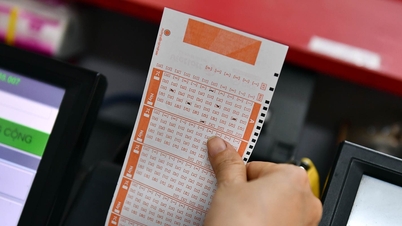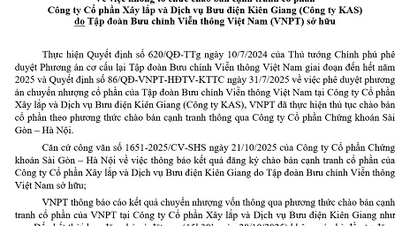Why exclude individual professional investors from the private bond market?
The draft amended Securities Law not allowing individual investors to participate in the private bond market is receiving mixed opinions.
 |
| Professor Tran Ngoc Tho. |
Investment Newspaper had an interview with Professor Tran Ngoc Tho, member of the National Financial and Monetary Policy Advisory Council, on this issue.
What does the Professor think about the amended Securities Law stipulating that only professional institutional investors are allowed to participate in the private corporate bond market?
First of all, it is necessary to affirm the consistent argument that individual corporate bonds are only a playground for professional investors, legalized with strict conditions on assets, qualifications, degrees, and investment experience. The draft amended Law only allows professional investors who are organizations to participate in the individual bond market, while individual professional investors are completely excluded from the game. The Government has explained the reasons and the National Assembly 's review body also agrees with the Government's argument.
But if we put the issue differently, keeping up to date with modern developments in technological innovations and the latest trends in private placement channels in general, including corporate bonds, and the latest legal adjustments in various countries, the Draft Law could lead to a more balanced approach.
If there is a sophisticated approach, by still maintaining the core principle of protecting investors, but still achieving the goal of developing the capital market in a sustainable manner, then the exclusion of individual professional investors from the private bond playing field needs to be carefully considered by the management agency.
But has the Government explained that professional individual investors can participate in individual bonds indirectly by investing in investment funds and then the funds will invest their money in individual bonds?
If we argue like that, it cannot explain why there are still many countries such as Singapore, Thailand, Malaysia, the United States, etc. that allow professional investors to participate in the private bond market. The problem is, if we really have a suitable legal framework, plus high quality in the capacity of the market management agency, then investors' money can still be responsibly invested in private bonds, without creating major disruptions that destroy market confidence.
 |
| The law needs to protect investors while aiming to develop the capital market sustainably. Photo: Duc Thanh |
But the Government has the goal of redirecting investment channels from individual professional investors to investment funds to focus on creating a separate bond market only for "eagles" who are institutional investors?
This is a legitimate goal. But the reality in our country shows that most funds hold very few individual bonds due to the high risk, which is different from the fund's risk appetite.
Moreover, this target is going against the current global trend. The World Economic Forum (WEF) 2023 theme on “capital markets, private placements and financial inclusion” has demonstrated a new trend of non-institutional investor participation in private placements. Public placements have long played a central and traditional role in the development of the global economy. But according to WEF, a significant change is taking place. The public channel is gradually shifting to private placements with a strong growth rate and now accounts for 9.6 trillion USD of global assets.
WEF believes that investors are turning to private placements because they no longer see it as an alternative in the traditional sense, but as an opportunity and a right to participate in inclusive economic development.
Can the professor explain more about this argument of WEF?
To make it easier to visualize, I will tell the story of how recently, Chairman of the Ho Chi Minh City People's Committee Phan Van Mai called on people to buy bonds so that the government can have funds to build a 183 km urban railway line worth 36 billion USD. Or it is possible that in the near future, the Government will consider a plan to mobilize nearly 100 billion USD for the North - South expressway project. Then there will be many winning enterprises participating in the component projects of urban railway lines and expressways. So where does this huge financial source come from?
For example, a business issues individual bonds to participate in component projects. If you are an individual (professional) investor who loves this country and city and has faith and pride in the Fatherland, instead of relying on foreign "debt traps", to contribute to the overall development of the Ho Chi Minh City urban railway project and the North-South expressway, please answer me the question: Why can't I buy individual bonds issued by businesses, but have to contribute money through investment funds (with high costs and they can't invest heavily in this project due to restrictions on the investment portfolio as required by the fund's major shareholders)?
Here we will understand why WEF calls private placements no longer an alternative. It is precisely the right of investors to participate and enjoy the new fruits of inclusive economic development of each country and the global economy.
Now, let's return to the most controversial issue, which is how to protect professional investors from the overly complex risks of the individual bond channel?
While expanding access to private placements can provide diversification, potential for increased returns and income, the lack of transparency surrounding private placements can pose significant risks to investors. But instead of opting to exclude them from the private placements market as the Draft Law suggests, I have a few suggestions as follows.
First, adopt a “higher criteria, broader options” approach.
The Law Drafting Agency and the National Assembly can still keep the private bond option as a playground for institutional investors, but loosen the rules to allow individual professional investors to participate in the purchase and trading of private bonds in the secondary market, instead of completely banning it. Some successful international experiences will illustrate this approach.
 If there is a sophisticated approach, by still maintaining the core principle of protecting investors, but still achieving the goal of developing the capital market in a sustainable manner, then the exclusion of individual professional investors from the private bond playing field needs to be carefully considered by the management agency.
If there is a sophisticated approach, by still maintaining the core principle of protecting investors, but still achieving the goal of developing the capital market in a sustainable manner, then the exclusion of individual professional investors from the private bond playing field needs to be carefully considered by the management agency. 
In 2016, the Singapore Exchange (SGX) set out two frameworks for qualified issuers to offer private bonds to investors through two frameworks, namely challenge bonds and exempt bonds.
For the first framework, to be recognized as a challenge bond, the issuer must satisfy two conditions: it must be listed on SGX for at least 6 months and must meet the eligibility criteria of net assets, listing history, and mandatory credit rating, such as being rated at least BBB and having listed or guaranteed to issue at least S$500 million. Once the conditions are met, the challenge bond can be offered to retail investors. SGX lists individual bonds in large denominations, at least S$200,000 for institutional or accredited investors. But challenge bonds can be repriced into smaller lots, as low as S$1,000, to facilitate investor participation in the individual bond market.
For the second framework, to be recognized as an exempted bond, the issuer must satisfy much more stringent criteria than the challenged bond. That is, it must have a credit rating of at least AA, be listed on SGX for at least 5 years and the issuer must sell at least 20% of the initial issue to institutional investors such as banks, investment funds, insurance companies. If we study the exempted bond framework in this way, it will be possible to develop institutions to participate in individual bond investment and mobilize significant financial resources from investors as the goal of the Law drafting agency.
To further encourage the exempted bond channel, Singapore allows issuance costs to be deducted from income tax for eligible private issuers. In addition, the Government has set up a separate fund to support credit rating costs for eligible exempted bond issuers.
Thailand also allows high net worth investors to participate in the private bond market with strict conditions on information disclosure… from the issuer.
Malaysia, which has traditionally allowed institutional and high net worth individuals to participate in the private bond market, is now leveraging technological innovation to launch a centralised information platform (BIX Malaysia), allowing retail investors to participate in the wholesale (private bond) market more efficiently.
With a “higher criteria, broader options” approach like Singapore, Thailand, Malaysia, we have the ability to mobilize all social resources to the maximum, while still being able to achieve the most important goal of protecting investors, instead of eliminating them from the game.
Second, the Draft Law can supplement the application of a mechanism to classify individual bond issuances so as not to miss start-up businesses and emerging industries, in line with the economic development strategy of the Party and State.
For example, Rule A of the US Securities Act allows startups to issue up to $5 million to qualified investors without filing a full registration statement with the Securities and Exchange Commission, provided the issuer provides financial statements prepared in accordance with generally accepted accounting principles and the document contains appropriate non-financial information. This classification recognizes the active role of startups and small and medium-sized enterprises in raising not-so-large initial capital (for which banks are reluctant to lend) through the individual bond channel.
Or to better protect investors, in addition to the value criterion, the criterion of the number of eligible investors can be combined. For example, the Australian Corporations Act 2000 allows small-scale offerings of only 2 million Australian dollars to no more than 20 eligible investors.
I suggest that the Draft Bill could consider the Australian approach and explore a maximum private placement threshold for start-ups, small and medium enterprises for individual professional investors in the primary market.
Third, instead of strictly adhering to the investor protection philosophy, we can consider how to harmonize with the investor “protection of choice” philosophy.
For example, the US Start-Up Business Act (JOBS ACT) stipulates that the amount of money that an eligible investor can invest in individual issuance channels is limited according to net worth and annual income. For example, an investor with a net worth of $75,000 (annual income equal to or less than that amount) can only invest a maximum of $3,750/year in individual bonds; an investor with a net worth of $750,000 can only invest a maximum of $75,000... The remaining amount in the net assets, the investor can invest in other types of bonds, depending on the risk appetite; or if they want to be safer, they can switch to investment funds. This approach seeks to diversify the investor's money into many different bond channels to help them avoid their own mistakes.
The challenge bond and exempt bond frameworks of Singapore and many other countries are following the “protecting investor choice” approach with different variations.
The philosophy of “protecting investors’ choices” can protect investors from losing too much money and thus negatively impacting the confidence of the whole market. It achieves the goal of maintaining investor protection, but also contributes to mobilizing all social resources for capital market development.
Fourth, it is possible to further improve the conditions for professional investors. It is possible to reduce the passion and patience of professional investors by increasing the holding period of individual bonds to 1-2 years or more.
Fifth, enhance legal responsibility for intermediaries such as issuance consultants, auditors, lawyers, price appraisers and credit rating organizations for private bond issuance channels.
Setting up a policy for issuing individual bonds is like adjusting a carburetor. When individual bond regulations are too strict, many suitable fuel sources may be missed. But if they are too lenient, taking advantage of all fuel sources (even low quality), the carburetor will operate inefficiently. The Draft Securities Law has many complex technical details, we hope that the management agency and the National Assembly, like skilled engineers, will find the optimal balance when revising the Draft Securities Law this time.
Source: https://baodautu.vn/sao-lai-phai-loai-nha-dau-tu-chuyen-nghiep-ca-nhan-khoi-thi-truong-trai-phieu-rieng-le-d227316.html





![[Photo] Prime Minister Pham Minh Chinh chairs the second meeting of the Steering Committee on private economic development.](https://vphoto.vietnam.vn/thumb/1200x675/vietnam/resource/IMAGE/2025/11/01/1762006716873_dsc-9145-jpg.webp)









































































































Comment (0)